Books set in Paris
Page-turning in the City of Light
Paris, the City of Light, has long captivated the hearts and imaginations of writers and readers alike. Its stunning architecture, vibrant culture, and rich history create a mesmerizing backdrop for storytelling. In this blog post, we’ve curated a list of novels set in Paris that offer vivid and evocative descriptions of the city. Whether you’re wandering through its charming streets in the 1920s with Hemingway or exploring the hidden corners of modern Parisian life, these stories promise to transport you to the enchanting world of Paris. Dive into these literary gems and let the magic of the city unfold on every page.
Paris fiction
Muriel Barbery
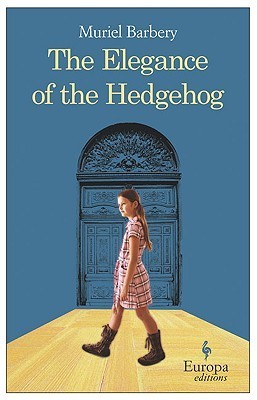
The Elegance of the Hedgehog

Nicholas Barreau
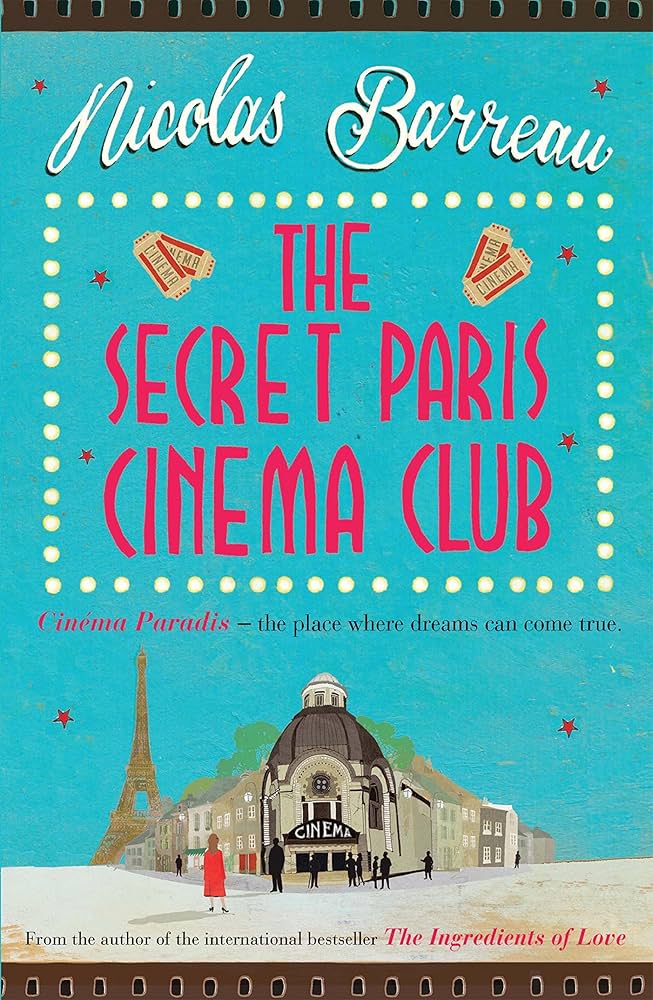
The Secret Paris Cinema Club

Dan Brown
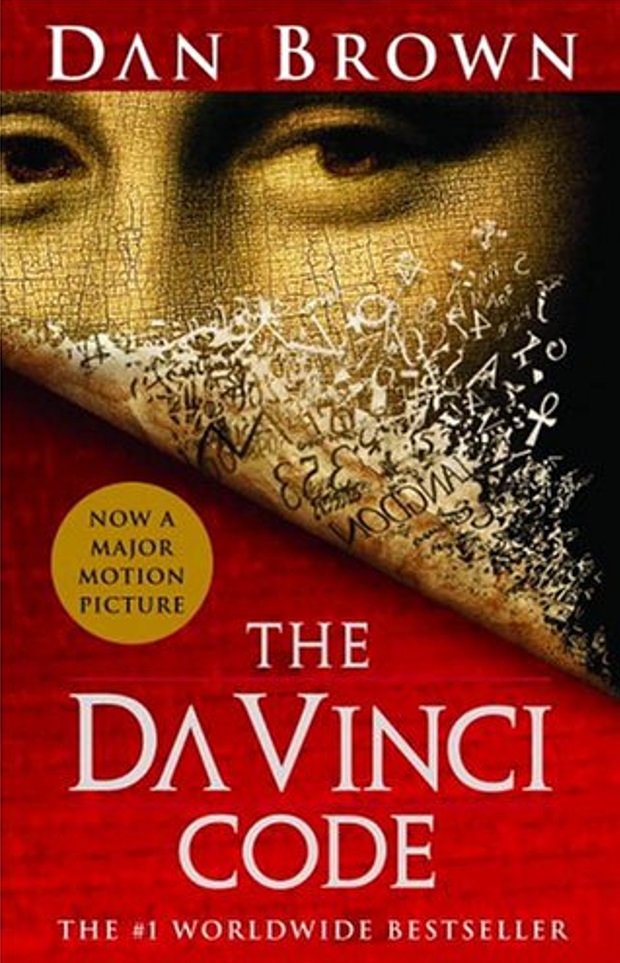
The Da Vinci Code

Liam Callanan

Paris by the Book

Janet Skeslien Charles
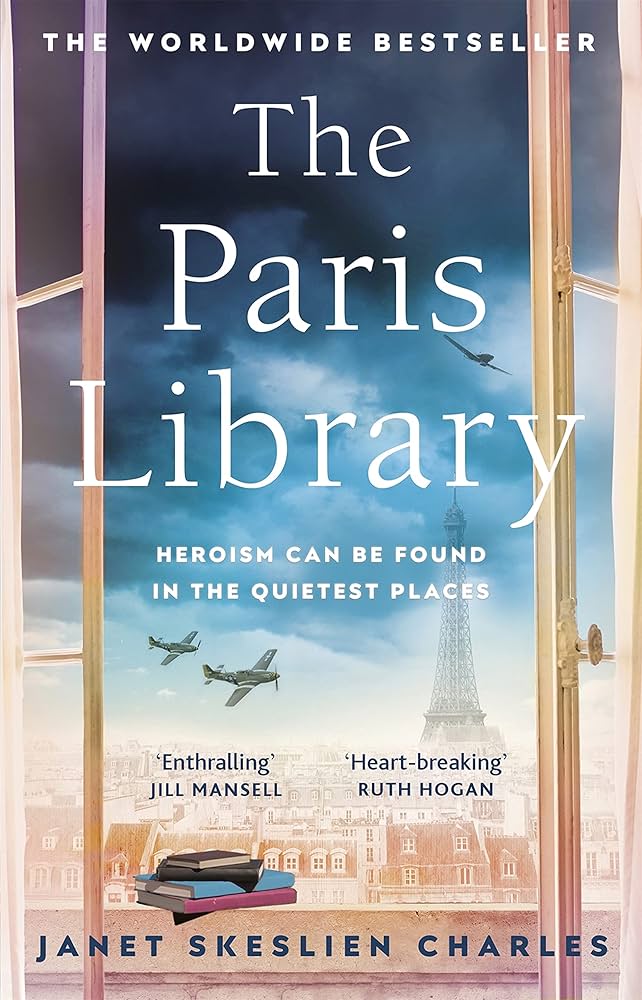
The Paris Library

Andrée Chedid
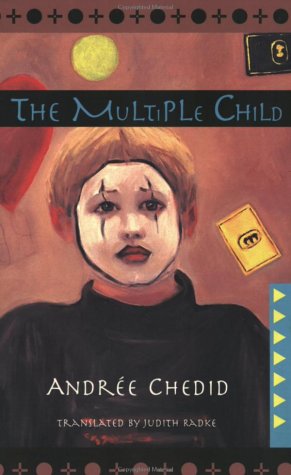
The Multiple Child

Helen Constantine
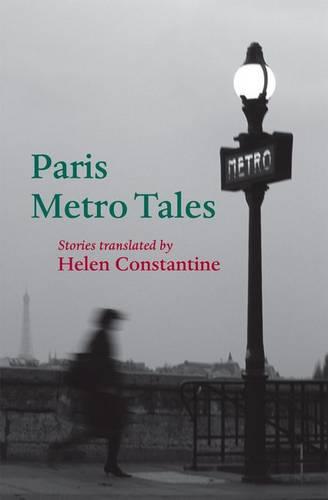
Paris Tales

Anthony Doerr
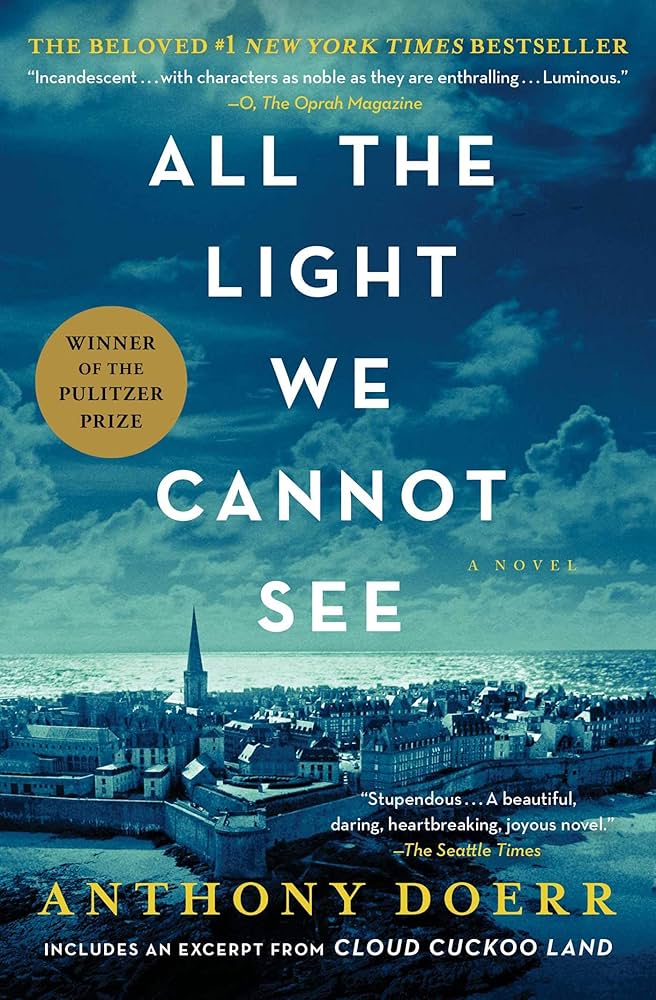
All the Light We Cannot See

Sebastian Faulks
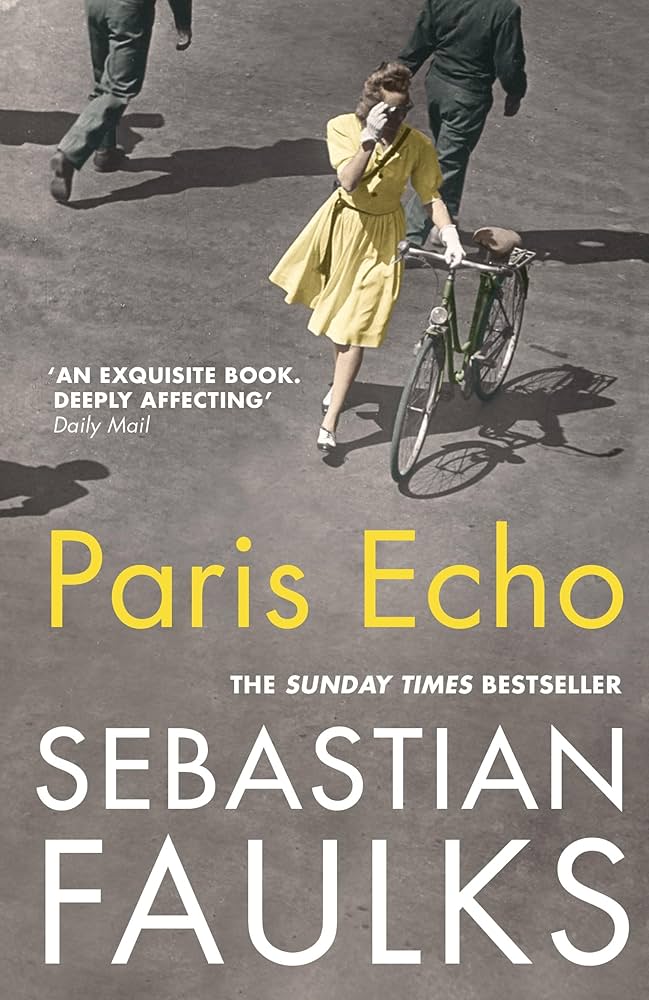
Paris Echo

F. Scott Fitzgerald
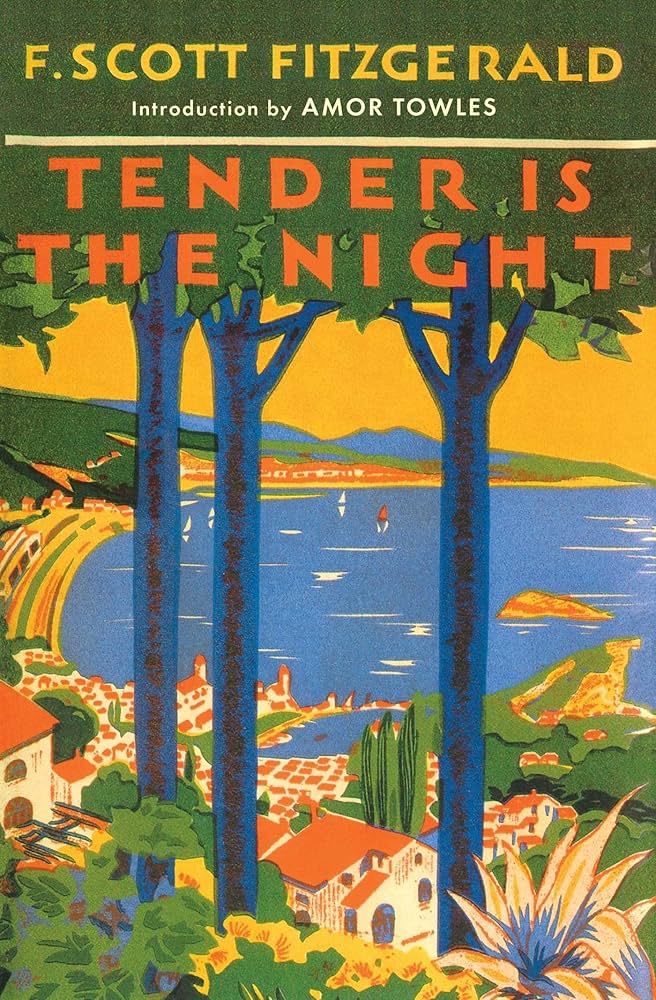
Tender is the Night

Gayle Forman
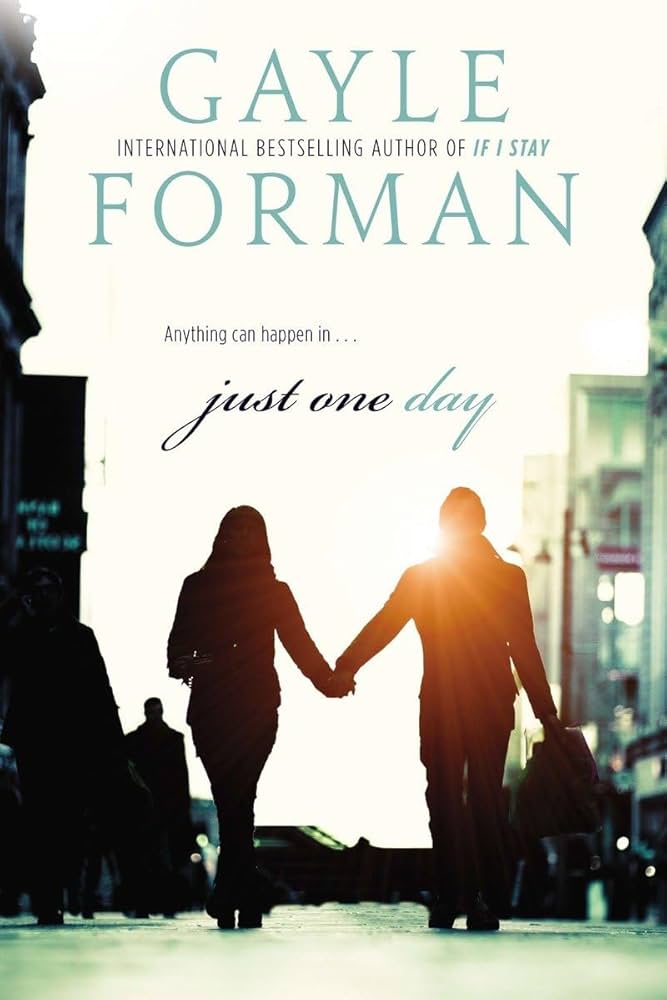
Just One Day

Marius Gabriel

The Parisians

Anna Gavalda

Hunting and Gathering

Nina George
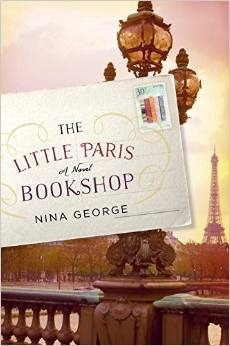
The Little Paris Bookshop

Pam Jenoff
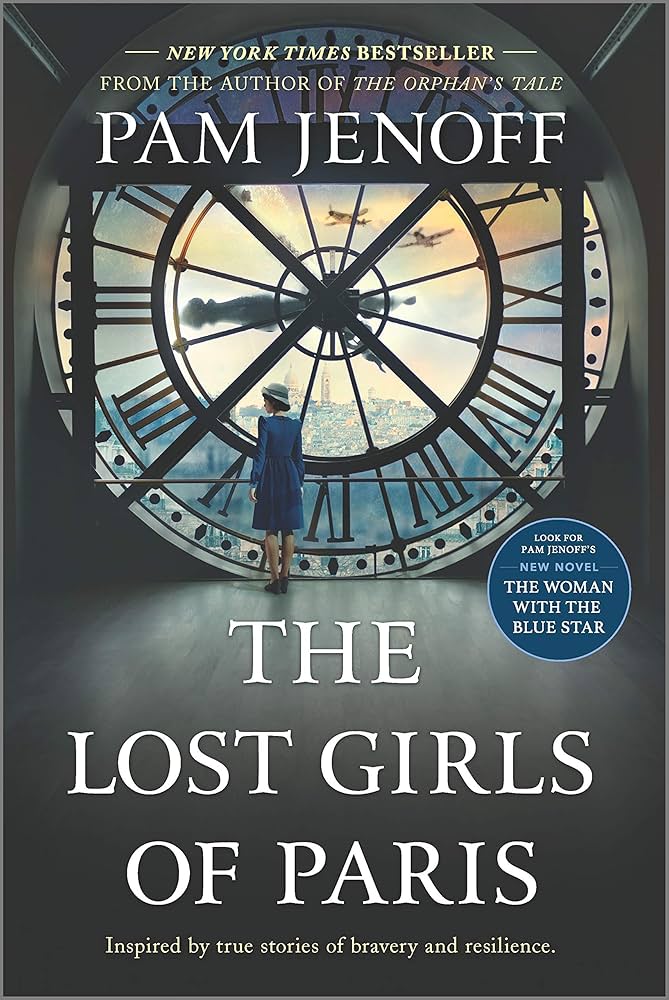
The Lost Girls of Paris

Paula McLain
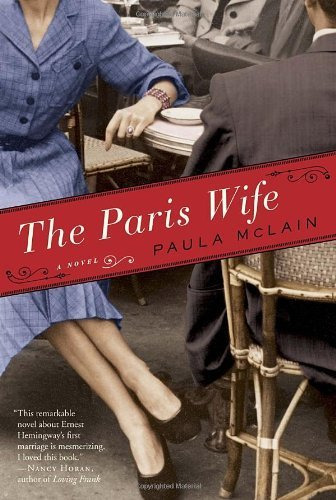
The Paris Wife

Stephanie Perkins
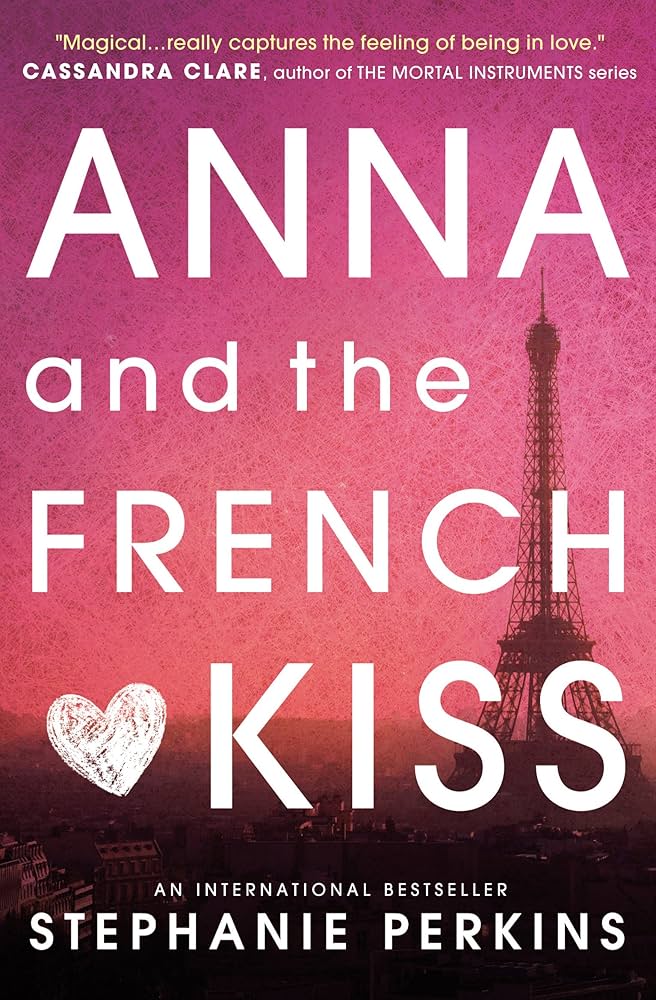
Anna and the French Kiss

Tatiana de Rosnay
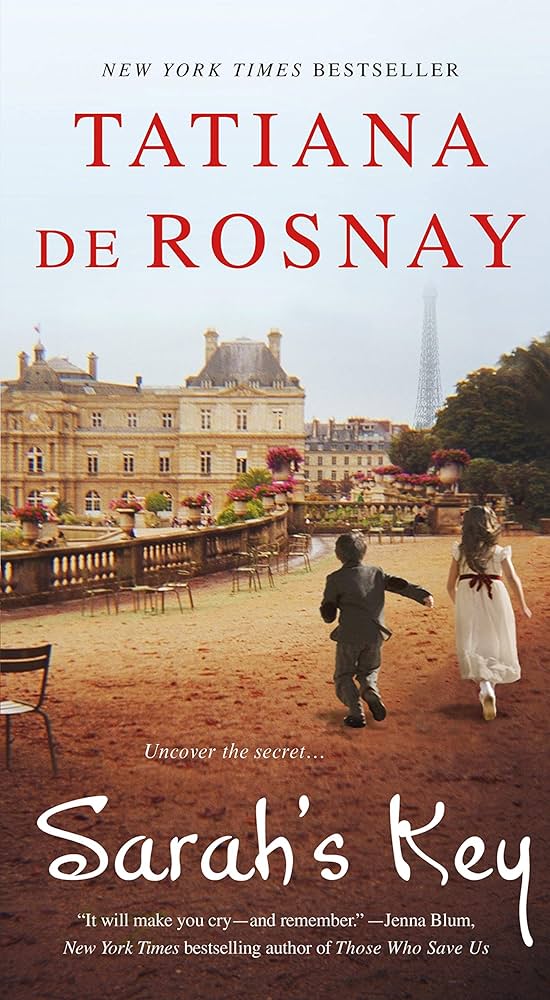
Sarah’s Key

Edward Rutherfurd
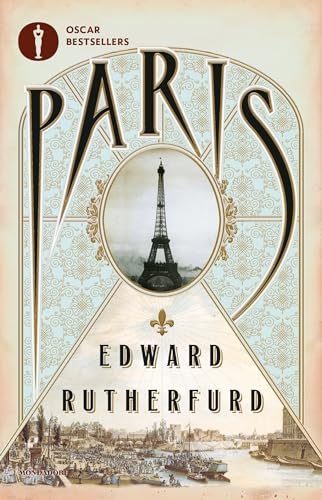
Paris

Fred Vargas
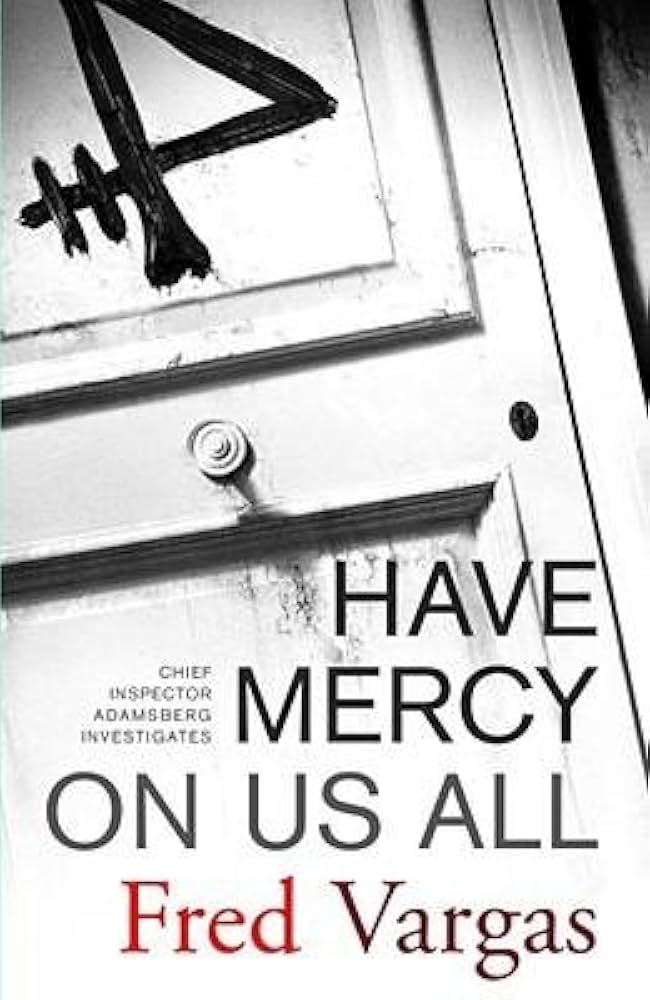
Have Mercy On Us All

Non-fiction
Edward Chisholm

A Waiter in Paris

Ernest Hemingway
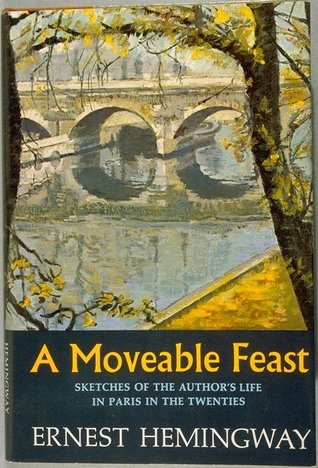
A Moveable Feast

Jeremy Mercer

Time Was Soft There / Books, Baguettes & Bedbugs

Anaïs Nin

Henry and June

Jacques Réda
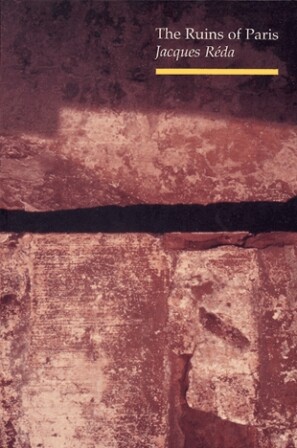
The Ruins of Paris

Elaine Sciolino

The Only Street in Paris

This project is growing steadily, starting with curated reading lists and gradually expanding to include literary locations in each featured city.
The long-term goal is to read the books, visit the locations they evoke, and share reviews alongside photos and insights. At the moment, it’s a solo effort built around full-time work — so updates may take time.
If you have suggestions to contribute, or would like to share a review based on how well a book helped you explore a place through literature, feel free to get in touch here.
Paris Book Reviews
A Moveable Feast
Ernest Hemingway

Ernest Hemingway’s A Moveable Feast is a memoir of his experiences in 1920s Paris, capturing the city’s impact on him as a young writer. He would write each morning, stopping only when his ideas were still “flowing well.” By halting mid-flow, Hemingway believed he left the “well” of creativity full, ensuring fresh ideas awaited him each morning. Afternoons were for walking—allowing Paris’s life, from the Seine to Montparnasse, to inspire him further. From his home at 74 Rue du Cardinal Lemoine he would frequently walk through the Jardin du Luxembourg, stop to work at Café des Lilas and head over to Shakespeare and Company. He once describes just enjoying a cold beer whilst quietly reflecting with the Michel Ney Monument.

The first two-thirds of the book are set largely in Paris, following Hemingway’s daily life in the Latin Quarter. Here, the beauty and challenges of his adopted city fuel both his work and his friendships. He recalls in detail his relationships with Gertrude Stein, Ezra Pound, and later, a troubled F. Scott Fitzgerald. Hemingway’s memoir reveals how Paris’s charm and complexity fed his creative drive, marking it as a “moveable feast” that, in his words, “stayed with you, for Paris is never-ending.”
The Ruins of Paris
Jacques Réda

Jacques Réda, a celebrated French poet and essayist, is renowned for capturing Paris’s essence in an introspective, observational style. His work highlights the city’s unnoticed corners, finding beauty in urban decay and forgotten spaces. The Ruins of Paris steers away from grand landmarks to focus on quieter, less-traveled streets, celebrating both Paris’s history and impermanence. Influenced by jazz, his prose carries a lyrical rhythm, bringing Paris’s unique, often hidden, details to life. This book is rooted in the tradition of the flâneur—a term popularised by Charles Baudelaire in 1860’s The Painter of Modern Life, which describes strolling and observing urban life.
Originally released in 1977, The Ruins of Paris reflects decades of flânerie, with Réda often seen mid-thought as he roams the city streets, sometimes by foot, sometimes by bicycle, sometimes even doiong a bit of Urbexing. Absorbing and immersive, The Ruins of Paris is an ideal follow-up to Hemingway’s A Moveable Feast, perfect for readers travelling the literature chronologically from the Beat Generation to Paris’s quiet allure.
The Little Paris Bookshop
Nina George

This charming novel follows a bookseller called Perdu who runs a floating bookshop on the Seine. However, only about the first 20% is in Paris, and even then, it mainy focuses on a particular apartment. So in terms of transporting yourself from armchair to Paris, this isn’t a top pick.
That said, as a novel for wider French travel, it is a good one. After over 20 years anchored to the same spot on the Seine, Perdu unchains and sets off in order to find himself. Joined by tag-along struggling author Max, as well as Kafka and Lindgren – the two well-read stray cats that inhabit the book barge.
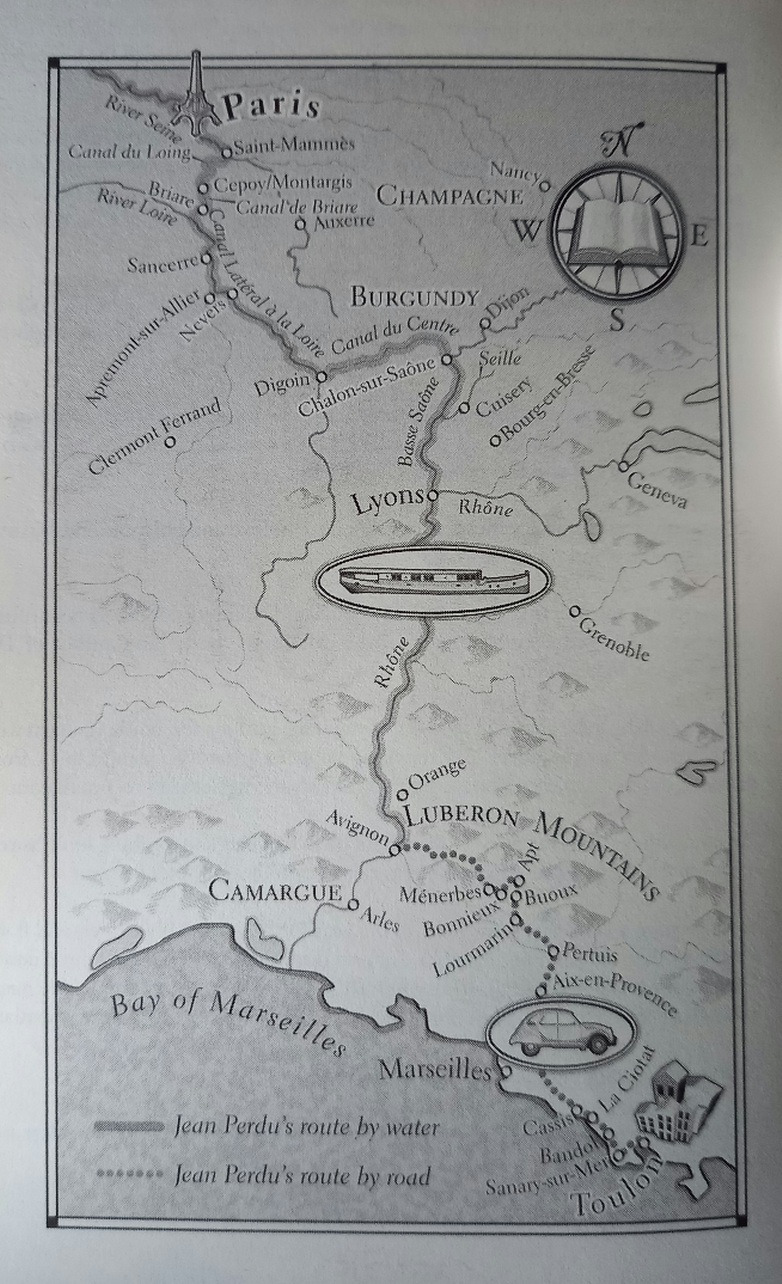
Travelling south along the canals, they stop in various places including: Saint-Maurice-sur-Loire, Avignon, Lyon and Cuisery. The descriptions are lushous and this novel makes for a great wormhole.
Cuisery was an unknown to me, and has now gone on to the evergrowing to-visit list. Similarly, I hadn’t come across a book barge and wondered whether this was a real thing. It is. And ‘Word on the Water’ in London has also gone onto the list.
The Multiple Child
Andrée Chedid

A contemporary poet, Chedid’s works often explore themes of identity and belonging in Paris. Her poems frequently evoke the cityscape and the emotions it inspires, blending personal experience with the broader Parisian context. The Multiple Child follows Omar-Jo after his parents are killed in a car bombing in Lebanon. Omar-Jo is sent to Paris to live with relatives, where he rebuilds his life, forming close bonds with a group of eccentric outsiders. The pièce de résistance of this ensemble is Maxime, the owner of a dilapidated carousel.

Going off-piste… Andrée Chedid is the grandmother of the French rock musician -M- (the stage name of Louis Chedid’s son, Matthieu Chedid). She has contributed song lyrics for his music, including the track ‘Bonoboo’ on the album Je dis aime. -M-‘s signature hairstyle, resembling the letter ‘M’, became almost as iconic as his music.
The Paris Library
Janet Skeslien Charles

In The Paris Library, Janet Skeslien Charles transports readers to the tumultuous years of World War II, where the American Library in Paris becomes a lifeline for both intellectual sustenance and human connection. Inspired by true events, Charles’s novel delves into the lives of the librarians who, under the Nazi occupation, risked their safety to protect books and deliver them to Jewish readers and soldiers on the front lines. At its heart, the novel is a tribute to the power of literature in times of darkness.
The narrative is structured as a dual timeline, weaving together the stories of Odile Souchet, a young librarian in 1940s Paris, and Lily, a teenager in 1980s Montana, who discovers that her elderly neighbour has secrets buried in the City of Light. The Paris of Charles’s novel is one marked by shadows, yet also by the resilience and quiet defiance of those who refuse to surrender their love for books and knowledge. Unlike many wartime novels that focus on the grand scale of conflict, The Paris Library shines in its attention to intimate details within the library itself—the smell of aged paper, the hushed conversations between book lovers, and the solace found within the pages of cherished volumes.
While the novel may not delve as deeply into broader Parisian settings as some readers might anticipate, it instead captures the essence of the city’s intellectual and cultural spirit during an era of repression. Charles’s portrayal of the American Library as a bastion of freedom is both poignant and evocative, underscoring the role of literature as an act of resistance.
For those who enjoy wartime fiction, and are captivated by Paris and its literary history, The Paris Library offers a heartfelt exploration of how books can shape and sustain us, even in the darkest of times. It stands as a testament to the enduring power of stories to connect people across decades and distances. If the American Library is wormhole is on your visit list then this novel is a must read.
Paris Bookish place to visit
Shakespeare and Company
37 Rue de la Bûcherie
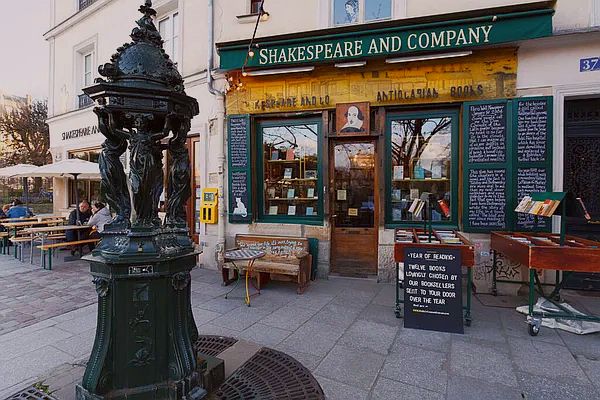
Shakespeare and Company’s history began in 1919, when American Sylvia Beach opened her bookstore at 12 rue de l’Odéon in Paris. The shop became a cultural centre for the “”Lost Generation,”” attracting writers like Ernest Hemingway, F. Scott Fitzgerald, and Gertrude Stein. Beyond selling books, Beach created a space for literary exchange and made history by publishing James Joyce’s Ulysses in 1922. During WWII, after refusing to sell a book to a Nazi officer, Beach was forced to close the shop in 1941.
In 1951, bookseller George Whitman opened another bookstore nearby, initially named Le Mistral, echoing Beach’s legacy. In 1964, he renamed it Shakespeare and Company to honour her. Whitman introduced a unique tradition, offering free lodging to young writers and artists, now called “Tumbleweeds,” who could stay among the bookshelves in exchange for helping out. Guests were encouraged to read a book a day and leave behind a short autobiography.
Whitman’s store became known not only for nurturing down-and-out writers but for its resident cats, a touch that added to its charm. Today, his daughter Sylvia Whitman carries on the legacy, keeping Shakespeare and Company a literary haven on Paris’s Left Bank. A plaque outside commemorates the bookstore’s rich past, while its vibrant traditions link generations of readers, writers, and dreamers. Nowadays you can often find a long queue to enter the bookshop, particularly on weekends. A small café has be adjoined to the side, which provides decent coffee and pastries, along with a free branded bookmark with your purchase.
Café de Flore
172 Bd Saint-Germain
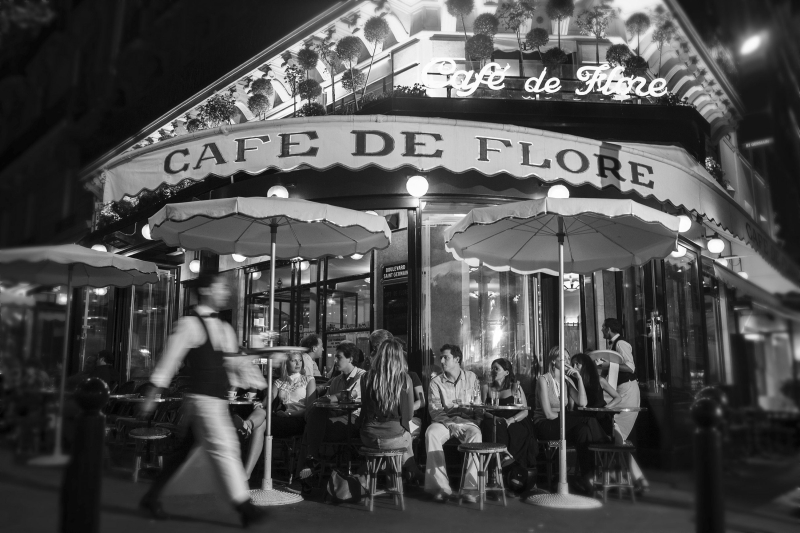
Situated in the vibrant Saint-Germain-des-Prés district of Paris, this café has long been a cultural epicentre for intellectuals and writers. It was notably frequented by Jean-Paul Sartre and Simone de Beauvoir, who used the café as a base for discussing existentialist philosophy, politics, and literature during and after World War II. Sartre referred to it as his “office,” reflecting its importance as a meeting point for his circle of thinkers.
In the early 20th century, Café de Flore also played a pivotal role in the development of the Surrealist movement. Writers like Guillaume Apollinaire and André Breton often gathered here, where many key surrealist ideas were discussed and conceptualised.
The café’s literary significance endures through the Prix de Flore, a literary prize established in 1994 by Frédéric Beigbeder. The prize is awarded annually to young, emerging authors, reflecting the café’s continued commitment to nurturing literary talent.
Even during the difficult period of the Nazi occupation of Paris, Café de Flore remained a sanctuary for intellectuals. Sartre, de Beauvoir, and Albert Camus met here to exchange ideas despite the repressive political climate.
The café’s influence extends beyond France. Notable international authors like James Baldwin and Ernest Hemingway were known to frequent Café de Flore. Baldwin even wrote parts of his famous novel Go Tell It on the Mountain there, while Hemingway was a regular visitor during the 1920s.
Rimbaud Poem Wall
Rue Férou

The Rimbaud poetry wall is located on Rue Férou in Paris’s 6th arrondissement, near Saint-Sulpice Square. The wall features the full text of Arthur Rimbaud’s poem Le Bateau Ivre (The Drunken Boat), which was added on 14 June 2012. Rimbaud wrote Le Bateau Ivre in 1871 at the age of 17. The poem contains 25 quatrains and describes a boat’s surreal journey through stormy seas. Another quirk is that the poem is written from right to left, rather than the traditional left to right.
The English version can be found on The Poetry Foundation website
Historically, Rue Férou has strong artsy connections. Ernest Hemingway lived at No. 6 in 1926, and Man Ray, the American artist and photographer, also resided on the street. Ernest Hemingway lived at 6 Rue Férou with Pauline Pfeiffer, whom he later married. They stayed there for nearly two years while Hemingway worked on his novel A Farewell to Arms.
La Closerie des Lilas
171 Bd du Montparnasse

Other significant literary figures also frequented La Closerie des Lilas, making it a central hub for the Lost Generation. F. Scott Fitzgerald, author of The Great Gatsby, often visited the café to meet Hemingway, and their interactions helped shape modern American literature. James Joyce, the celebrated Irish author of Ulysses, was another regular patron during his time in Paris, contributing to the café’s legendary status.
“”The Closerie des Lilas was the nearest good café when we lived in the flat over the sawmill at 113 rue Notre-Dame-des-Champs, and it was one of the best cafés in Paris”” – Ernest Hemingway, A Moveable Feast
La Closerie des Lilas in Paris is an iconic café with a rich literary history, particularly associated with Ernest Hemingway. Located in the Montparnasse district, it became a gathering spot for many prominent writers and intellectuals during the early 20th century. Hemingway often referred to La Closerie des Lilas as his “”home away from home”” during his years in Paris. He wrote parts of The Sun Also Rises here and described it fondly in his memoir, A Moveable Feast, calling it a place where he could work peacefully, surrounded by the lively conversations of artists and intellectuals.
Other significant literary figures also frequented La Closerie des Lilas, making it a central hub for the Lost Generation. F. Scott Fitzgerald, author of The Great Gatsby, often visited the café to meet Hemingway, and their interactions helped shape modern American literature. James Joyce, the celebrated Irish author of Ulysses, was another regular patron during his time in Paris, contributing to the café’s legendary status. French writers such as Paul Verlaine and André Breton were also known to visit the café. Verlaine, one of the great Symbolist poets, and Breton, a leader of the Surrealist movement.
Today, La Closerie des Lilas retains its literary charm, with plaques commemorating the famous writers who once sat at its tables.
The Beat Hotel
9 Rue Git-le-Coeur
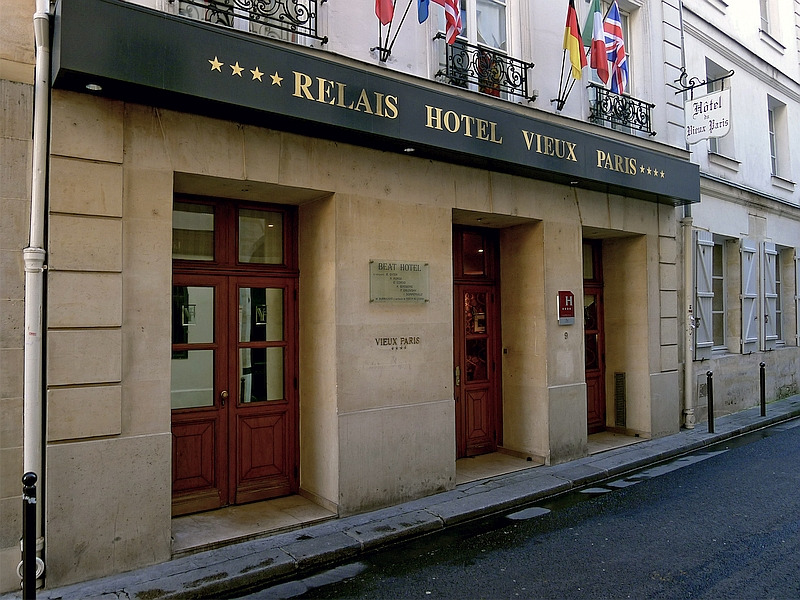
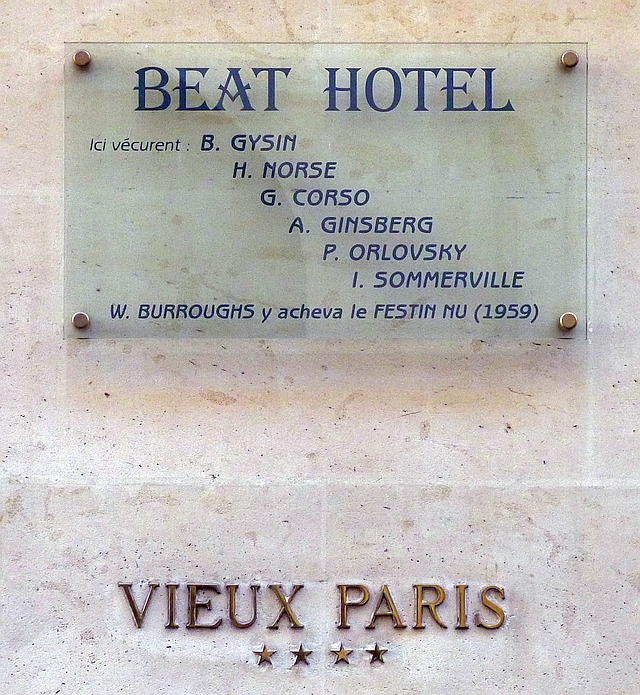
Gregory Corso, the youngest of the Beats, coined the name “Beat Hotel,” turning the previously nameless boarding house into a cultural landmark. Ginsberg wrote parts of Kaddish here, and Corso crafted his famed poem Bomb, designed in the shape of a mushroom cloud. Photographer Harold Chapman, a long-term resident, documented the hotel’s vibrant literary scene, capturing its residents and their bohemian lifestyles from a tiny, makeshift darkroom.
The Beat Hotel’s reputation grew as its writers gained international fame. Journalists referred to it as a “flea-bag shrine” for the Beats. By 1964, the hotel had closed, marking the end of its era as a literary hub. Today, a luxury hotel stands in its place, with a plaque outside commemorating its role in shaping the Beat literary movement.
See a short trailer here for an intruiging documentary about this literary wormhole.
Les Deux Magots
6 Place Saint-Germain des Prés
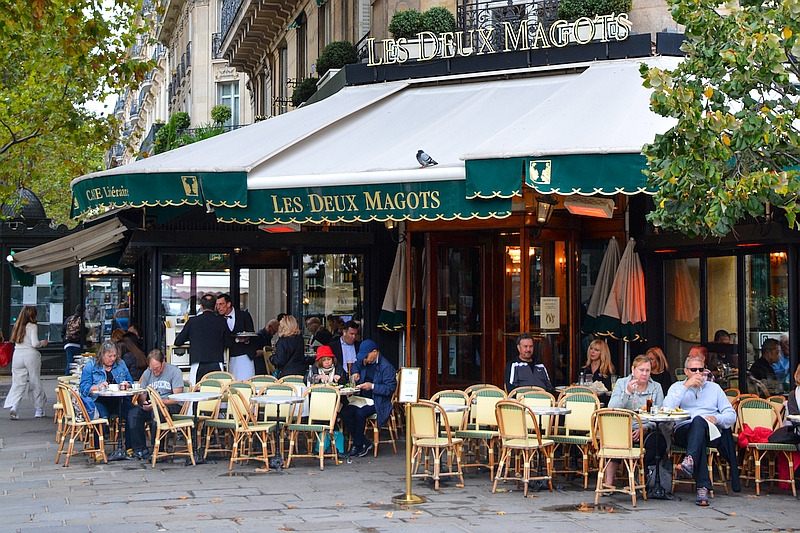
Café de Deux Magots, located in the heart of Paris’s Saint-Germain-des-Prés, has long been a gathering place for the city’s literary and artistic elite. Established in 1885, the café’s name comes from the two Chinese figurines, or “”magots,”” that originally adorned a shop that once stood in the same spot. Over time, Deux Magots transitioned into a hub for intellectuals and artists, attracting an array of famous writers, philosophers, and painters.
By the early 20th century, the café became synonymous with Paris’s thriving literary scene. Figures like Jean-Paul Sartre and Simone de Beauvoir could often be found discussing philosophy and existentialism at its tables. Writers like Ernest Hemingway, Albert Camus, and Pablo Picasso also frequented the café, and their presence cemented its reputation as a vibrant intellectual center.
The café even found its way into literary works. James Joyce referenced Deux Magots in Finnegans Wake (1939), and it was later mentioned by Hemingway in A Moveable Feast (1964). In fact, Joyce was once interviewed at the café by Djuna Barnes for Vanity Fair in 1922, where he ordered a glass of white wine. Later, George Orwell recalled thinking he had seen Joyce in the café in 1928, though he couldn’t quite be sure due to Joyce’s nondescript appearance. This rich literary legacy is further highlighted by the annual Prix des Deux Magots, a literary award established in 1933, which continues to celebrate innovative writers to this day.
Carousel du Luxembourg
9 Rue Guynemer
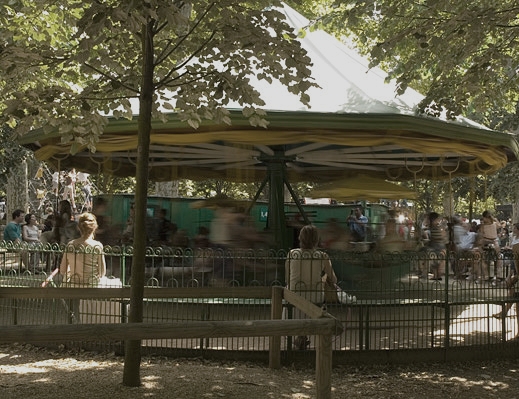
Rilke used his poetic ability to find depth in this everyday experience in his Das Karussell.
“”…and every now and then a smile, turned
hither,
enchanted, ravishing, and lavishing
upon this blind and breathless game””
The Carrousel du Luxembourg sits quietly in the corner of the vast Jardin du Luxembourg, often overlooked by the hurried footsteps of tourists rushing to capture the grandeur of the palace or the beauty of the famous fountains. It’s a relic of a simpler time, its horses eternally circling, waiting patiently for a rider.
Paul Valéry statue
Pl. du Trocadéro et du 11 Novembre

A bronze bust of Paul Valéry, sculpted by Renée Vautier, stands in the Jardins du Trocadéro in Paris. Paul Valéry, born in Sète, Languedoc-Roussillon, on 30th October 1871, was christened Paul Ambroise Toussaint Jules Valéry. Although he initially pursued legal studies, he is best known as a homme de lettres, having achieved distinction as a poet, essayist, and philosopher.
His contributions to literature earned him twelve separate nominations for the Nobel Prize in Literature. Elected to the prestigious Académie Française, he also served as a cultural ambassador for France, notably representing the nation at the League of Nations.
Valéry’s intellectual curiosity extended far beyond literature; he held deep interests in music, art, history, and politics, particularly in relation to current events. His lifelong fascination with the workings of the mind led him to keep more than 250 notebooks, meticulously recording reflections on subjects ranging from psychology to the creative process. These notebooks, now housed in the Bibliothèque nationale de France (BnF), offer a unique insight into his thoughts on consciousness and intellectual exploration.
Four verses from Valéry’s poems are inscribed on the façades of the Palais de Chaillot, constructed for the 1937 World Fair, a lasting testament to his cultural and literary influence.
The American Library in Paris
10 Rue du Général Camou

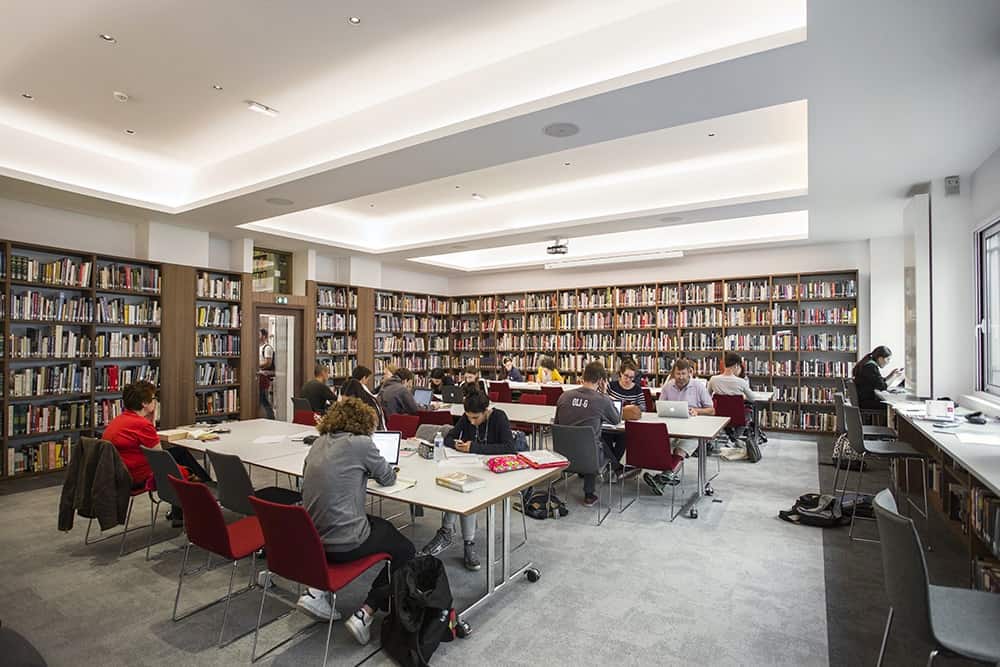
Located at 10 Rue du Général Camou, just a short walk from the Eiffel Tower, the library today remains a hub for literary enthusiasts. The interior, while not adorned with the rich, decadent features of old-world libraries, offers a more modest, functional post-war feel. Large windows and well-lit reading areas create a comfortable, welcoming space focused on accessibility rather than opulence, making it a practical spot for reading, study, and quiet reflection. It hosts lectures, author readings, and workshops. While a day pass costs 15 euros, there is a free one-hour history tour every Friday at 11 am, currently rotating between two themes: the library’s 100+ years of service, or their origin story during Les Années Folles—“the crazy years.” A perfect choice for those wishing to bring their literary exploration of The Paris Library by Janet Skeslien Charles into the third dimension.
See the official website
